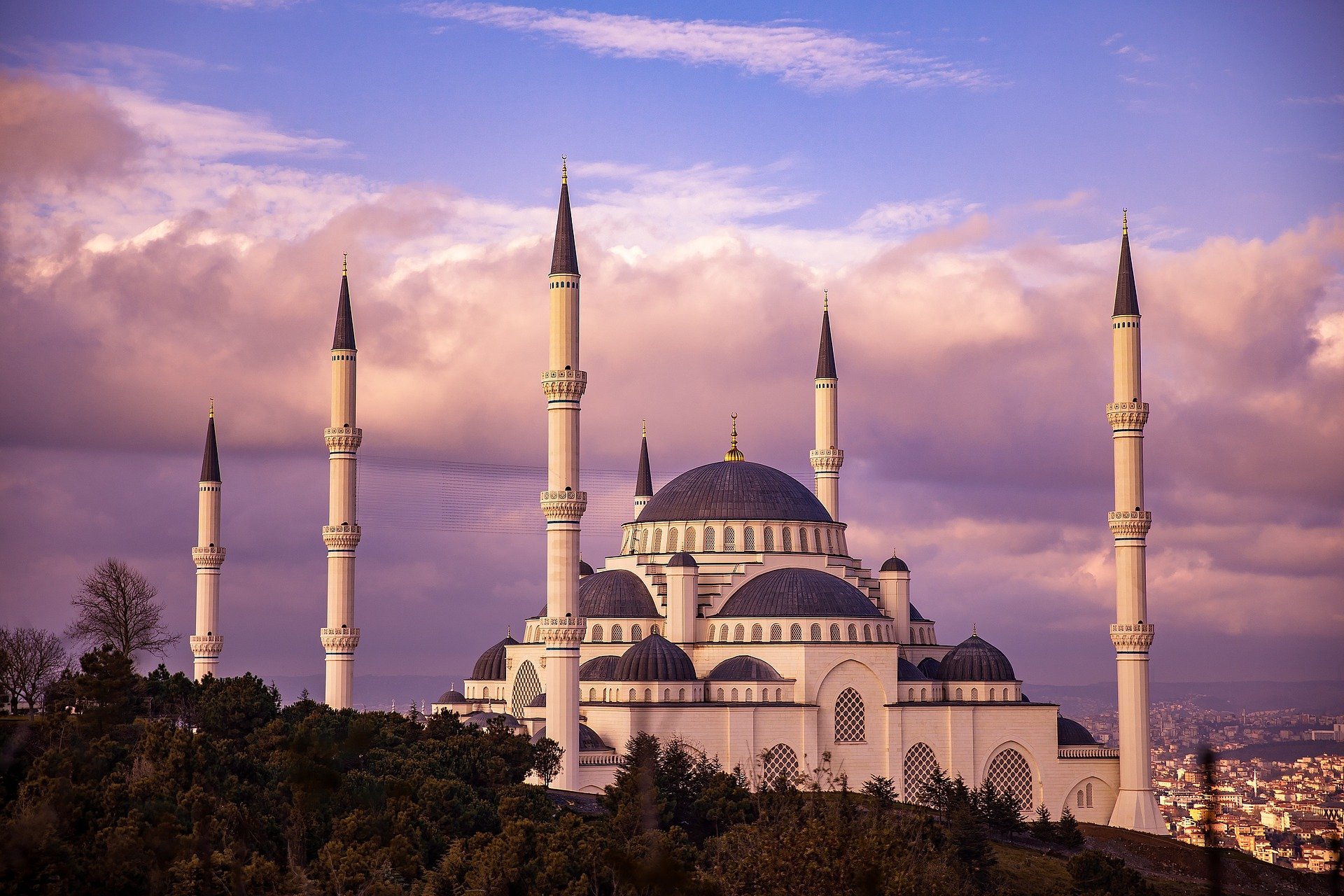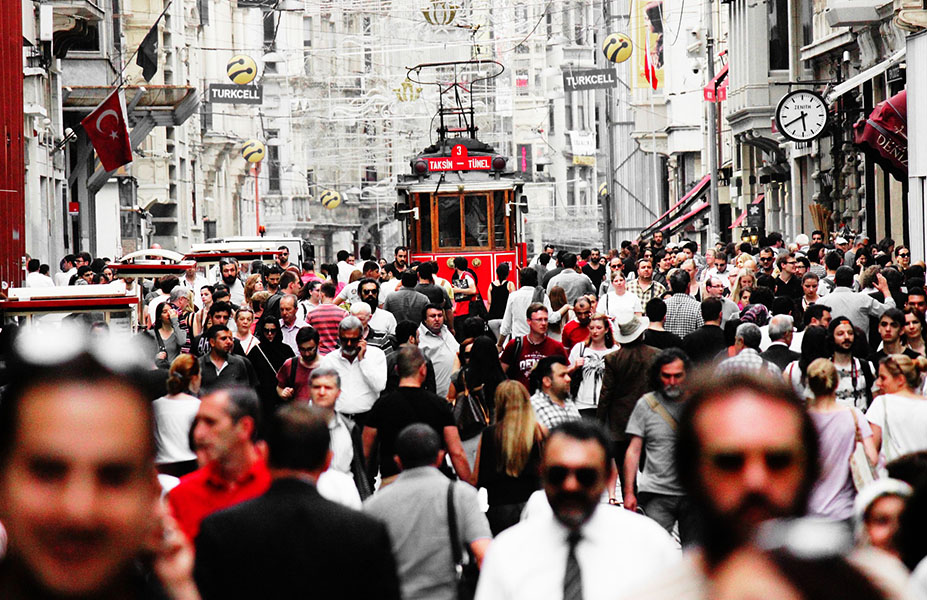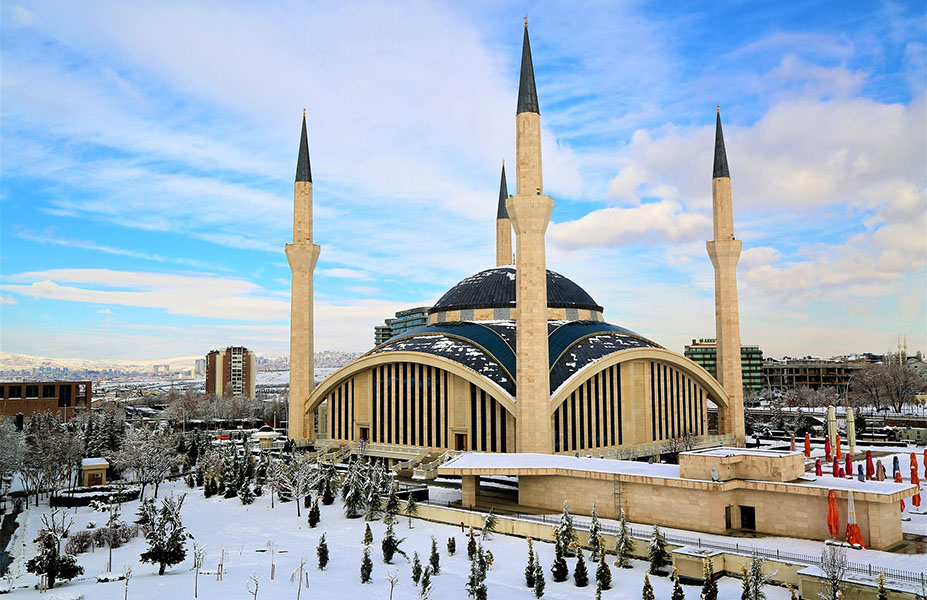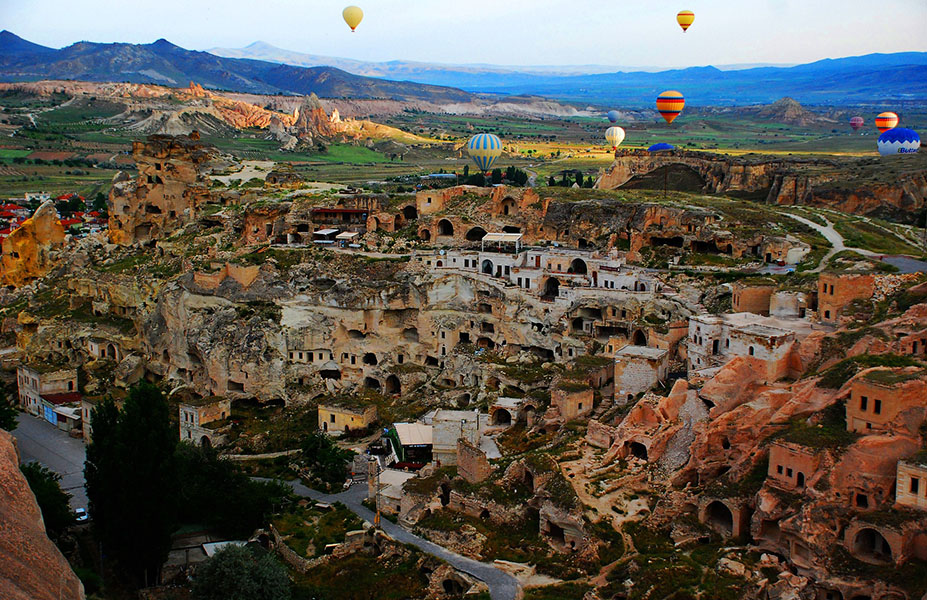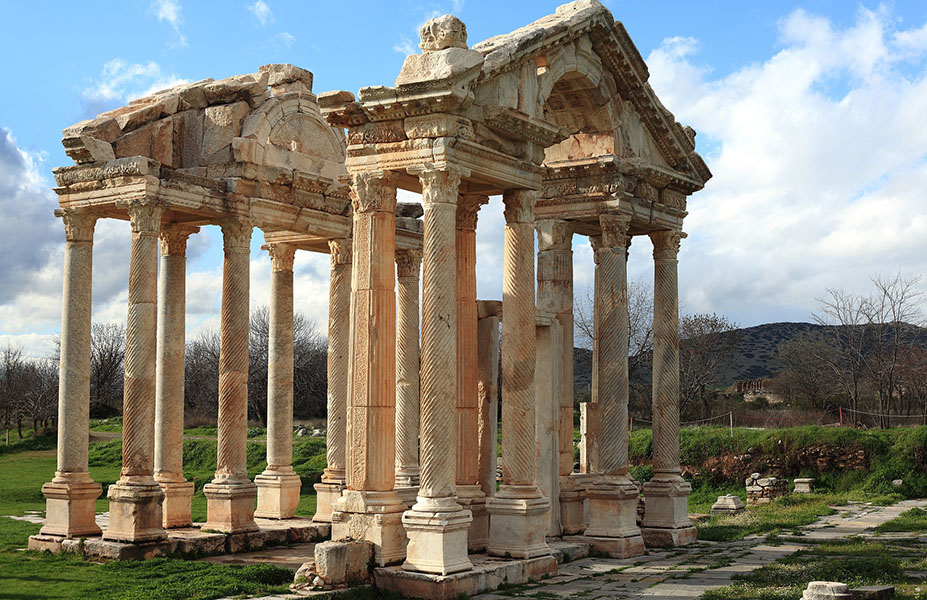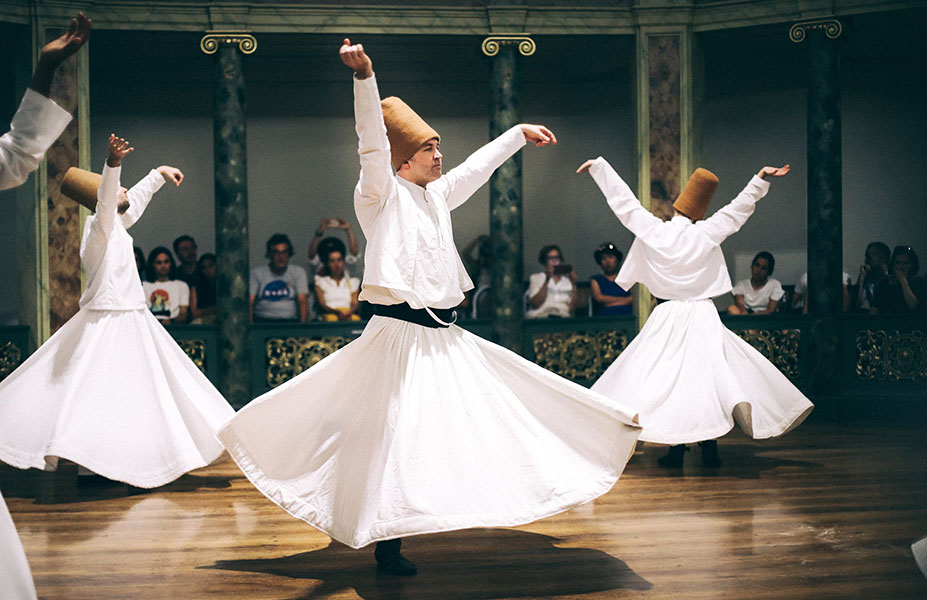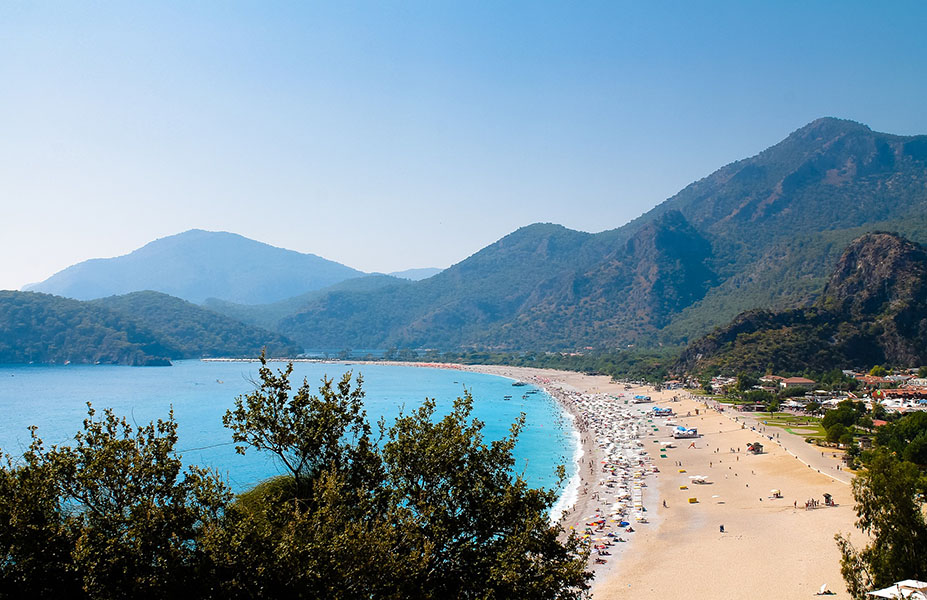Don’t miss next deals! Sign up for email alerts. Subscribe to #europe alerts »
Currency – Turkish lira (₺)
Language – Turkish
Vaccine – No vaccinations are required.
Electricity – 230V. 50 Hz. Power plugs and sockets are of type C & F
EMERGENCY TELEPHONES
National Police: 155
Medical emergency: 112
Turkish culture has effectively blended the values and modernity between Europe and the Middle East. Islam remains the majority religion, but it is practiced in a much more secular manner than in other Middle Eastern countries. This is one of the reasons why Turkey is a suitable country for assimilating into the Muslim community.
The hospitality of the Turkish people adds to the charm of the walks, which can begin in Istanbul, the most populated city in the country. Ancient Constantinople was the Roman Empire’s capital and has a fascinating history dating back to 667 BC. It is split into two parts, one in Europe and the other in Asia.
Turkey’s unique characteristics, in addition to its pleasant climate and natural beauty, have made it a popular tourist destination. The number of visitors has risen dramatically in recent years. Turkey is also one of the world’s most visited countries.
TOURIST SITES OF TURKEY
Istanbul – Istanbul is the largest and most important city in Turkey. It consists of two parts, the European and the Asian, since it geographically unites both continents. For several centuries, what was once the capital of the western world is now called the heart of Turkey. Istanbul is an ancient but now majestic metropolis with a population of around 12 million people, a beautiful setting straddling Europe and Asia, and an unquestionable centre of global history, mythology, commerce, and culture.
Given its large size, number, and range of things to do, it is a city that can be seen in several days. Visit the Grand Bazaar, Hagia Sofia, the Blue Mosque, Topkapi Palace, and the Basilica Cistern, among many other sights.
Ankara – Turkey’s capital is a bustling city in the heart of Central Anatolia’s semi-desert. Ankara has nothing in common with Angora, an Ottoman city that grew up on the same site and was known for its long-haired goats, whose wool was used to make soft garments.
Pamukkale – Pamukkale is Turkish for “cotton fortress.” When looking at some picture of the place, the explanation is obvious. In southwestern Turkey, it is both a protected environment and a well-known tourist destination.
The ancient city of Hierapolis is located right next to the natural wonder. It was built on top of the “white fortress,” which spans 2,700 meters in length and 160 meters in height. Pamukkale, like Hierapolis, has been a UNESCO World Heritage Site since 1988.
Cappadocia – Cappadocia is another destination that has been included on the UNESCO World Heritage Sites list since 1985. It is distinguished by its historical and cultural heritage, as well as its one-of-a-kind geological structure. The term Cappadocia refers to the whole region, which includes parts of the provinces of Kayseri, Aksaray, Nide, and Nevşehir.
Underground cities – For millennia, Cappadocia’s position made it a crossroads of trading routes as well as a focus of constant invasions. The people of the area constructed underground shelters (examples can be seen in the cities of Kaymakl and Derinkuyu), where entire cities could take refuge and survive for months without losing their lives in the open air.
These underground cities were constructed on multiple levels (Kaymakl city has nine underground levels, but only four are accessible to tourists; the rest are used for archaeological and anthropological research).
They were fitted with vents, stables, bakeries, water wells, and everything else needed to house communities of up to 20,000 people.
Ephesus – Ephesus was one of the Aegean Sea’s twelve Ionian cities. It served as a significant religious, educational, and commercial hub. Its ruins are now a popular tourist destination. It is a historically significant location that is well worth visiting.
Antalya – Antalya is a Turkish city that sits on the Mediterranean coast. It is now one of the country’s most popular summer vacation spots. With its pleasant environment, it is an ideal destination for those looking for some beach time while also learning about the region’s culture and history.
DAILY LIFE
In Turkey, you can enjoy its beaches, practice winter sports, mountaineering, visit its national parks, benefit from its thermal stations. The nightlife is reduced to the large centers such as Istanbul, or the coastal cities with a significant influx of tourism.
IN BARS AND RESTAURANTS
Restaurant are open from 12.30 to 14.30 and 19.30 to22.00 h. Some stay open later.
TIPS
In Turkey, gratuities are usually modest. In pubs, cafés, and bars, you can tip 5-10 percent as a general rule. Hotel employees should expect to be paid anywhere from 5 to 20 Turkish Liras for their work, based on their responsibilities. Taxi drivers are not tipped in Turkey; instead, taxi fares are rounded up.
RELIGION
Muslim 99.3%
0.4% crypto-Christian
0.1% Catholic
0.1% Orthodox
HOLIDAYS
January 1 – New Years Day
April 23 – Feast ofthe soberandnational and childhood
May 19 – Youth and sports festival
May 27 – Feast ofthe Constitution
August 30 – Feast of victory
October 29 – Feast ofthe Republic
CLIMATE
Winters on the Aegean Sea and Mediterranean coasts are cool and rainy, with hot and dry summers. Summer temperatures in Istanbul range about 29°C; winters are cool (though rarely below 0°C), with some precipitation and sometimes a bit of snow. Summers on the Anatolian plateau are hot, and winters are bitterly cold.
In the summer, the Black Sea coast is hot and sunny, and in the winter, it is cold and rainy. The mountainous region of eastern Turkey experiences very cold temperatures and snow in the winter, but is warm in the summer. The southeast is dry and temperate in the winter and hot in the summer.
TYPICAL DISHES
Döner Kebap: a traditional tower of lamb meat, the pieces of which are served on pita bread.
Yaprak dolmas: stuffed grape leaves.
Izgar alar: roast meats.
Sis Kebap: lamb skewers.
Sis Köfte: minced meat skewers.
Trança: grilled grouper on skewers.
Kiliç: swordfish grilled on skewers.
Hünkârbegendi: aubergines stuffed with rice.
Patlican domasi: aubergines stuffed with minced meat.
Pilav: steamed rice, used to accompany meats.
Börek: puff pastry filled with meat or cheese.
Çoban salatasi: Mixed tomato, cucumber and onion salad.
Salatalar: Salads.
Revani: Similar to Baba.
Dondurma: ice cream.
Tel Kadayif: a kind of noodles toasted with honey, almonds and sesame.
Baklava: puff pastry filled with cream and almonds.
Sütlaç: rice pudding.
Yoghurt.
BEVERAGES
The Raki: drink of high alcoholic graduation, made of grapes and scented with anise.
Ayran: original drink of Turkey (frozen yogurt and lightened with water).
The two national drinks are tea and coffee, both are consumed at all hours of the day.
LOCAL FRUITS
Grapes, apricots, peaches, apples, pears, raisins, figs, tangerines, oranges, melon, plums, watermelon, cherries.
AIR TRANSPORT
Turkish airlines ensure regular flights to Istanbul, Ankara, Izmir, Antalya and Dalaman from all major cities in the world.
From Istanbul, there are flights connecting the international airports of Izmir and Ankara, as well as all the major tourist cities in Anatolia. These flights are offered bythe Türk Hava Yollari, the Turkish national company.
BOAT TRANSPORT
Daily services from Venice and Piraeus are provided by Turkish shipping lines. There are services between the Turkish Aegean coasts and the Greek islands, in addition to the several Mediterranean cruises. Venice-Izmir-Venice is linked by a ferry from March to the end of October.
The ferries on which the car can be loaded can save several days of driving and allow you to take a mini-cruise along the Turkish coast. Ferries travel between Istanbul and Izmir and Istanbul and Trabzon (Trabzon), but only between June and September. Istanbul and Bursa are linked by a hovercraft.
They also provide passenger services along the Black, Marmara, Mediterranean, and Aegean seas’ coasts, offering a great way to get to know the region. Many of these services depart from Istanbul’s Galata Bridge. It is advised that you make a reservation in advance.
BUS TRANSPORT
The buses are not costly and run daily, although they are crowded during rush hour. The ticket must be purchased from an ATAC-accredited newsstand.
You can purchase 10-ticket vouchers, weekly tickets, or three-day tourist tickets. They circulate every half hour at night. The stops are optional, and you must request the stop by pressing a button
RAILWAY TRANSPORT
Except for the express service between Istanbul and Ankara, Turkish trains are not very efficient in the interior of the country, despite being cheap. They are sluggish and cramped.
ROAD NETWORK
Istanbul and Izmir are linked by a single stretch of highway.
The rest of the roads are lined and well maintained. The unpaved roads, though, are not always in decent shape.
Except on the Istanbul-Ankara highway, traffic is usually light (where traffic is very dense). On the major highways, there are several gasoline stations of different brands that are open 24 hours a day, 7 days a week.
DRIVING
Driving is on the right side. Incities speed limit is 50 km/h, and outside of them, it is 90 km/h.
When driving in Turkey, it is relatively easy to find fairly priced mechanical assistance, though dealing with local drivers can be challenging. It is safer to avoid going into towns because traffic is horrendous and parking is impossible to find.
RENTAL CARS (We recommend reserving us in advance):
There are many car rental companies in every tourist area. It is possible to rent chauffeured vehicles, but the costs are still high.
RENT A CAR at Istanbul International airport >>>
TAXIS
Taxis are frequent in cities, and their yellow and black colors make them easily identifiable. They are supplied with a taximeter in major cities. However, before you go out, you should negotiate price.
Another choice is the dolmus, which is a communal taxi that covers a certain route and can be identified by its yellow band. Each traveler is charged for the distance traveled. It is a very practical mode of transportation that is considerably less costly than a taxi.
Don’t miss next deals! Sign up for email alerts. Subscribe to #europe alerts »

